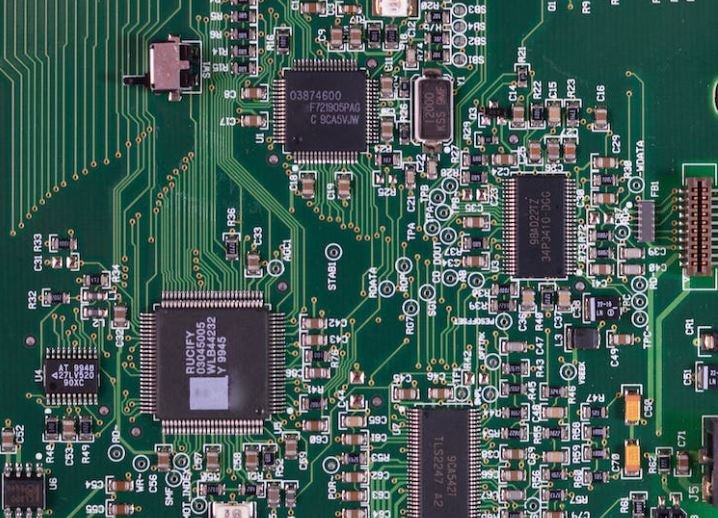AI vs Autonomy
Artificial Intelligence (AI) and autonomy are two technologies that are transforming various industries, from self-driving cars to digital assistants. While AI refers to machines and systems that can mimic human intelligence, autonomy refers to the ability of machines to operate independently, without human intervention. Although they are related concepts, AI and autonomy are not the same. In this article, we will explore the differences between AI and autonomy and discuss their respective strengths and applications.
Key Takeaways:
- AI and autonomy are distinct technologies with different functionalities.
- AI focuses on mimicking human intelligence, while autonomy enables machines to operate independently.
- AI is widely used in data analysis and decision-making, while autonomy is applied in tasks requiring physical actions.
- The combination of AI and autonomy is driving advancements in fields such as self-driving vehicles and robotics.
Artificial Intelligence (AI) systems are designed to analyze data, learn patterns, and make decisions or predictions based on that information. AI technologies can perform tasks that would typically require human intelligence, such as natural language processing, image recognition, and expert knowledge reasoning. AI is widely used across various industries to enhance efficiency, productivity, and decision-making processes. It can sift through massive amounts of data quickly, identify trends, and generate insights. *AI has the potential to revolutionize the way we work and live, providing opportunities for increased automation and improved problem-solving capabilities.*
On the other hand, autonomy focuses on enabling machines to operate independently and perform tasks without human intervention. Autonomous systems are designed to sense, analyze, and interact with their environment, allowing them to make real-time decisions and take appropriate actions. Autonomy is particularly relevant in applications that require physical actions, such as robotics, unmanned aerial vehicles (UAVs), and self-driving cars. *The ability to perform complex tasks without human input empowers machines to excel in areas where human limitations may exist.*
While AI and autonomy are distinct, they often complement each other. The combination of AI and autonomy opens up possibilities for advanced applications and enhanced capabilities. For example, self-driving cars utilize both AI and autonomy technologies. AI algorithms process data from sensors, cameras, and GPS to understand the vehicle’s surroundings and make decisions, while autonomy allows the car to act on those decisions by controlling steering, acceleration, and braking. This synergy between AI and autonomy is crucial for developing intelligent systems that can operate in complex and dynamic environments. *The integration of AI and autonomy enables machines to perceive, reason, and act autonomously, increasing their ability to adapt and respond to real-world situations.*
AI vs Autonomy: A Comparison
Table 1: AI vs Autonomy
| Technology | Functionality | Application |
|---|---|---|
| AI | Mimics human intelligence, analyzes data, and makes decisions based on patterns. | Data analysis, natural language processing, image recognition, expert knowledge reasoning. |
| Autonomy | Enables machines to operate independently, sense and interact with the environment, and make real-time decisions. | Robotics, self-driving cars, unmanned aerial vehicles (UAVs). |
The potential of AI and autonomy extends beyond self-driving cars. In healthcare, AI algorithms can analyze medical data, assisting doctors in diagnosing diseases and suggesting treatment plans. Autonomy technologies enable surgical robots to operate with precision and efficiency, supporting minimally invasive procedures. In agriculture, AI-powered drones equipped with autonomy features can monitor crops, optimize irrigation, and detect plant diseases. *The combination of AI and autonomy is transforming numerous industries, enhancing efficiency, accuracy, and safety across diverse applications.*
AI vs Autonomy: Strengths and Applications
AI demonstrates strengths in tasks that require data analysis, decision-making, and human-like reasoning. Some key strengths and applications of AI include:
- Processing and analyzing massive amounts of data to extract patterns and generate insights.
- Enhancing customer experiences through personalized recommendations and conversational AI.
- Automating repetitive tasks to improve efficiency and productivity.
Autonomy, on the other hand, excels in applications that require physical actions and real-time decision-making. Some strengths and applications of autonomy include:
- Operating machines and vehicles in environments that are unsafe or inaccessible to humans.
- Performing tasks with precision and accuracy, minimizing human errors.
- Enabling machines to adapt and respond to dynamic situations in real time.
Table 2: Strengths and Applications of AI vs Autonomy
| AI | Autonomy |
|---|---|
| Data analysis, decision-making, human-like reasoning. | Physical actions, real-time decision-making, adaptability. |
| Enhancing customer experiences, automating repetitive tasks. | Operating in unsafe or inaccessible environments, precision and accuracy. |
The integration of AI and autonomy is particularly exciting and holds immense potential for driving future innovations. The combination of AI’s ability to analyze and interpret vast amounts of data with autonomy’s power to act independently can create systems capable of complex interactions and problem-solving tasks. This synergistic relationship between AI and autonomy has the potential to revolutionize areas such as transportation, healthcare, manufacturing, and many more. *As technology continues to advance, the convergence of AI and autonomy is expected to give rise to even more sophisticated and intelligent machines.*
AI vs Autonomy: Challenges and Considerations
- Privacy and ethical concerns surrounding the use of AI and autonomy technologies.
- The need for transparency and explainability in AI algorithms.
- Ensuring the safety and reliability of autonomous systems.
- Addressing the potential displacement of human jobs with increased automation.
Table 3: Challenges and Considerations
| Challenges | Considerations |
|---|---|
| Privacy, ethics, transparency. | Safety, reliability, job displacement. |
While the integration of AI and autonomy presents numerous opportunities, it also comes with challenges that need to be addressed. Privacy and ethical concerns arise as AI systems collect and analyze vast amounts of personal data. The transparency and explainability of AI algorithms also become important to ensure accountability and mitigate bias. For autonomous systems, ensuring safety and reliability is crucial, especially when operating in critical applications. Additionally, the potential impact on job displacement and the need for reskilling and upskilling the workforce should be carefully considered. *Balancing the benefits of AI and autonomy with these challenges is key to harnessing their full potential and creating a sustainable future.*
In conclusion, AI and autonomy are distinct technologies with different functionalities, but their combination is transforming various industries. AI excels in data analysis and decision-making, while autonomy enables machines to operate independently and make real-time decisions. The integration of AI and autonomy opens up new possibilities for advanced applications with enhanced capabilities. While there are challenges and considerations, the potential for future innovation in fields such as transportation, healthcare, and manufacturing is immense. *The convergence of AI and autonomy is driving us towards a future where machines can perceive, reason, and act autonomously, revolutionizing the way we live and work.*

Common Misconceptions
Misconception 1: AI and Autonomy are the same thing
One common misconception is that AI (Artificial Intelligence) and autonomy are interchangeable terms. While both concepts are related, they are not the same. AI refers to the ability of a computer or machine to perform tasks that would typically require human intelligence. On the other hand, autonomy refers to the ability of a device or system to operate independently without human intervention.
- AI can be used to enhance the autonomy of a system, but it is not a prerequisite for autonomy.
- Autonomous systems can make decisions and complete tasks without relying on AI algorithms.
- AI can exist without autonomy, such as chatbots or recommendation systems.
Misconception 2: All autonomous systems use AI
Another misconception is that all autonomous systems rely on AI. While AI can play a crucial role in enhancing the capabilities and decision-making of autonomous systems, not all autonomous systems require AI technologies. Many autonomous systems are designed using rule-based logic or rely on pre-programmed instructions to function autonomously.
- Simple robotic systems can exhibit autonomy without relying on complex AI algorithms.
- Autonomous systems used in manufacturing and logistics often rely on pre-set rules and instructions.
- AI is just one tool that can be employed to achieve autonomy, but it is not the only option.
Misconception 3: AI poses a threat to autonomy
There is a misconception that AI poses a threat to autonomy, suggesting that autonomous systems enhanced by AI will become uncontrollable or pose risks to human safety. While it is true that AI can introduce complexities and challenges, when implemented correctly, AI can actually improve the safety and reliability of autonomous systems.
- AI algorithms can help autonomous systems adapt to changing environments and make better decisions.
- Proper safeguards and risk management can ensure that AI-enhanced autonomy remains safe and controlled.
- An understanding of the limitations and boundaries of AI is essential for developing safe and reliable autonomous systems.
Misconception 4: Fully autonomous AI systems exist
Many people mistakenly believe that fully autonomous AI systems already exist, capable of performing any task without human involvement. However, currently, there are no fully autonomous AI systems that can replicate the breadth and depth of human intelligence or handle all potential scenarios without human oversight.
- Current AI systems are limited to specific domains or tasks and require human intervention for complex decision-making.
- AI is evolving rapidly, but it is still far from achieving true human-level autonomy in all areas.
- Continuous human supervision and intervention remain important to ensure the proper functioning and safety of AI systems.
Misconception 5: AI and autonomy will replace human workers
One common misconception is that widespread adoption of AI and autonomy will lead to significant job losses, with humans being replaced by machines and algorithms. While it is true that automation can impact certain job roles, AI and autonomy are designed to augment human capabilities, not replace humans entirely.
- AI and autonomy can free up humans from repetitive or dangerous tasks, allowing them to focus on higher-value responsibilities.
- New job opportunities may arise as AI and autonomous systems require developers, operators, and maintainers.
- Humans still possess unique skills, creativity, and emotional intelligence that are not easily replicable by machines.

Table: AI Adoption Rates
In recent years, the adoption of artificial intelligence (AI) technologies has been rapidly increasing across various industries. This table highlights the percentage of organizations utilizing AI in different sectors.
| Industry | AI Adoption Rate (%) |
|---|---|
| Healthcare | 56% |
| Finance | 41% |
| Retail | 68% |
| Manufacturing | 32% |
| Transportation | 50% |
Table: Autonomous Vehicles on the Rise
The widespread adoption of autonomous vehicles has the potential to revolutionize transportation systems by reducing accidents and improving traffic efficiency. This table displays the increasing number of autonomous vehicles on the road worldwide.
| Year | Estimated Number of Autonomous Vehicles |
|---|---|
| 2015 | 8,000 |
| 2017 | 30,000 |
| 2019 | 120,000 |
| 2021 | 450,000 |
| 2023 (estimated) | 1,200,000 |
Table: AI vs Human Performance in Chess
Chess has long been seen as a test of human intellect. However, with the advancement of AI, machines have started surpassing human capabilities in chess. The table below illustrates the performance of top chess players and AI engines.
| Player/Engine | Highest Elo Rating |
|---|---|
| Garry Kasparov | 2851 |
| Magnus Carlsen | 2882 |
| Stockfish | 3438 |
| AlphaZero | 3800+ |
Table: Autonomous Robots in Manufacturing
In the manufacturing industry, autonomous robots have significantly impacted production processes, optimizing efficiency and minimizing human error. This table showcases the different types of robots employed and their specific tasks.
| Robot Type | Task |
|---|---|
| Collaborative robot (Cobot) | Assembly |
| Automated Guided Vehicle (AGV) | Material handling |
| Warehouse automation robot | Inventory management |
| Industrial robotic arm | Welding |
Table: Impact of AI in Healthcare
Artificial intelligence is making tremendous strides in the healthcare sector, aiding in diagnosis, treatment, and research. This table highlights some of the key areas where AI is transforming healthcare.
| Application | Benefits |
|---|---|
| Medical imaging analysis | Improved accuracy and faster diagnosis |
| Drug discovery | Accelerated development of new medicines |
| Virtual nurses | 24/7 patient support and monitoring |
| Genomics | Precision medicine and personalized treatments |
Table: Autonomous Drones in Delivery
The introduction of autonomous drones in delivery services has the potential to revolutionize the way we transport goods. This table showcases the benefits and limitations of autonomous drone delivery.
| Aspect | Benefit | Limitation |
|---|---|---|
| Speed | Rapid deliveries | Restricted by air traffic regulations |
| Cost | Efficient and cost-effective | High initial investment |
| Environmental impact | Reduced carbon emissions | Current limitations in carrying capacity |
Table: AI-Powered Language Translation
Language translation has become more accessible and accurate with the use of AI-powered technologies. This table presents the top language translation applications and their user ratings.
| Application | User Rating (out of 5) |
|---|---|
| Google Translate | 4.5 |
| Microsoft Translator | 4.2 |
| DeepL Translator | 4.7 |
| iTranslate | 4.3 |
Table: Impact of Autonomy in Space Exploration
The utilization of autonomous systems in space exploration missions has helped expand our knowledge of the universe. This table highlights notable autonomous space missions and their achievements.
| Mission | Achievement |
|---|---|
| Voyager 1 | First spacecraft to enter interstellar space |
| Curiosity Rover | Investigating Mars for signs of past microbial life |
| Cassini-Huygens | Providing insights into Saturn and its moons |
| Chang’e 4 | First mission to land on the far side of the Moon |
Table: Ethical Considerations of AI
As AI becomes more prevalent, ethical concerns arise regarding privacy, bias, and automation-induced job displacement. This table highlights some of these key considerations.
| Consideration | Implications |
|---|---|
| Data privacy | Risks of personal data breaches |
| Algorithmic bias | Potential discrimination based on flawed algorithms |
| Job displacement | Automation leading to unemployment in certain sectors |
| Autonomous decision-making | Accountability and responsibility concerns |
As the realms of artificial intelligence and autonomy continue to evolve and intersect, their impact on various aspects of society becomes evident. From the adoption rates in different industries to the rise of autonomous vehicles and the performance of AI in strategic games like chess, these tables shed light on the advancements in these fields. The integration of AI in healthcare, delivery services, language translation, manufacturing, space exploration, and the accompanying ethical considerations further emphasize their significance. With further advancements and responsible implementation, AI and autonomy can continue to drive innovation and propel us toward a more efficient and technologically advanced future.
Frequently Asked Questions
AI vs Autonomy
What is the difference between AI and autonomy?
AI, or Artificial Intelligence, refers to the development of computer systems that can perform tasks that typically require human intelligence. Autonomy, on the other hand, refers to the ability of a system or device to operate independently without human intervention. While AI technology can be used to enable autonomy, not all autonomy relies on AI.
How does AI enable autonomy?
Artificial Intelligence can enable autonomy by providing systems with the ability to perceive and understand their environment, make decisions based on that understanding, and take actions accordingly. AI algorithms can process data from various sensors, analyze it, and generate responses or commands for the autonomous system to operate efficiently.
Are AI and autonomy only used in robotics?
No, AI and autonomy can be utilized in various fields beyond robotics. While they are commonly associated with robotics, the principles of AI and autonomy can be applied in industries like healthcare, transportation, manufacturing, and even in smart home systems. The use cases for AI and autonomy are continually expanding.
What are some real-world applications of AI and autonomy?
Some examples of real-world applications of AI and autonomy include autonomous vehicles, automated industrial systems, intelligent personal assistants, medical diagnosis tools, and smart home systems. These technologies are revolutionizing several industries, optimizing processes, and enhancing convenience and safety for users.
What are the benefits of combining AI and autonomy?
Combining AI and autonomy allows for the development of advanced systems that can adapt, learn, and make optimal decisions based on various factors. This improves efficiency, productivity, and accuracy in many areas. Additionally, AI can provide autonomous systems with the ability to perceive and respond to changes in their environment in real-time, enhancing safety and performance.
Are there any ethical concerns associated with AI and autonomy?
Yes, there are ethical concerns associated with AI and autonomy. These include issues surrounding privacy, security, employment, and bias. Ensuring that AI and autonomous systems are developed and deployed responsibly, with proper consideration given to potential negative impacts and safeguards against misuse, is crucial in addressing these concerns.
How can AI and autonomy contribute to sustainable development?
AI and autonomy can contribute to sustainable development by optimizing processes, reducing waste, and enabling smarter resource management. In transportation, for example, autonomous vehicles can help reduce carbon emissions and enhance traffic efficiency. Additionally, AI algorithms can aid in the analysis and prediction of environmental patterns, facilitating better preservation and conservation efforts.
What are the challenges in implementing AI-enabled autonomy?
Some challenges in implementing AI-enabled autonomy include ensuring the reliability and safety of autonomous systems, addressing ethical concerns, integrating complex algorithms with physical devices, and overcoming legal and regulatory barriers. The interdisciplinary nature of AI and autonomy requires collaboration between experts in various domains to overcome these challenges successfully.
How will AI and autonomy impact the job market?
AI and autonomy have the potential to disrupt the job market by automating certain tasks and processes, resulting in the displacement of some jobs. However, they also create new job opportunities in fields such as data analytics, AI development, and robot maintenance. Skilled workers will need to adapt to the changing demands of the job market and acquire new expertise.
What is the future outlook for AI and autonomy?
The future outlook for AI and autonomy is highly promising. As technology continues to advance, we can expect further advancements in AI algorithms, sensor technologies, and autonomous systems. AI and autonomy will continue to play a significant role in transforming industries, improving efficiency and safety, and enabling innovative applications that were previously unimaginable.




